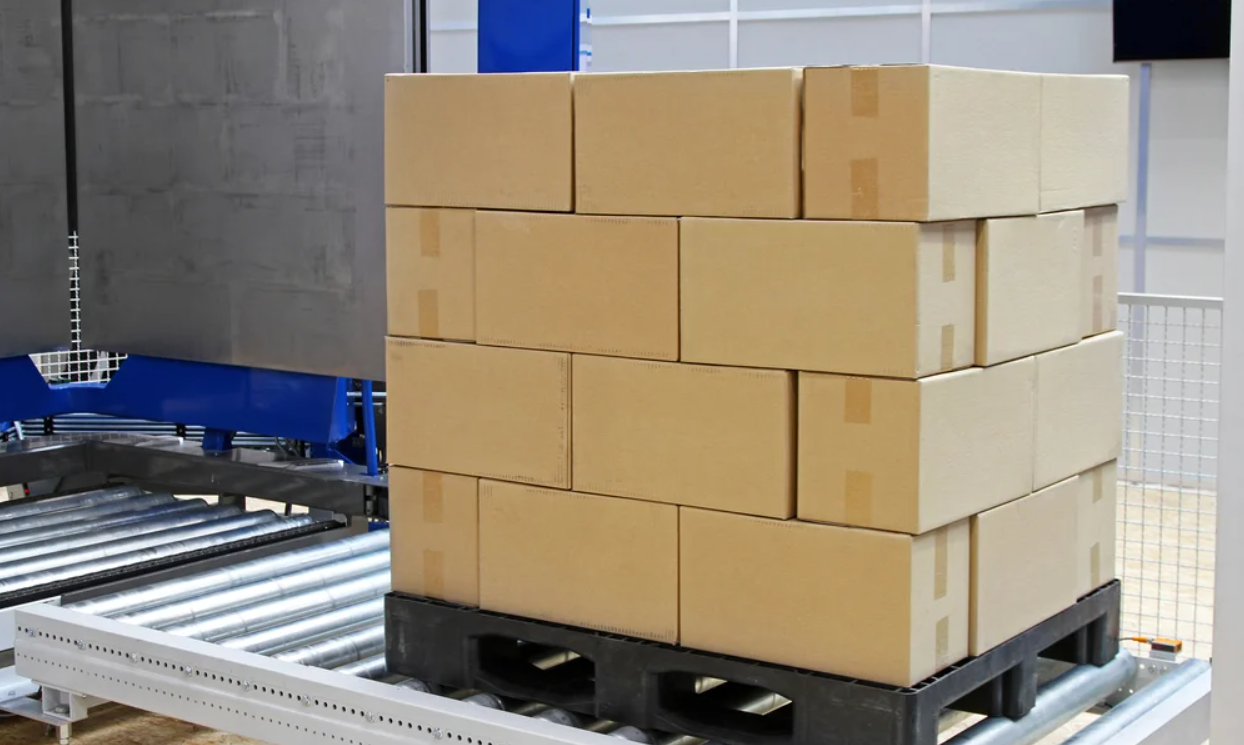
According to analysis from GlobalData, total annual sales of CPG via e-retailers are forecast to grow at a compound annual growth rate (CAGR) of 7.1% between 2022 and 2027. A steadily growing market, buoyed by the onward march of e-commerce and other related retail markets, means businesses working in the CPG industry have much to be cheerful about.
But there are challenges afoot. Catering to growing demand requires retailers and suppliers to optimize the management of their supply chains. As they strive to meet growing customer expectations and comply with new regulatory pressures, consumer goods firms must rethink traditional strategies to remain competitive and resilient in an increasingly complex market.
The COVID-19 pandemic disrupted long-established just-in-time supply chains, prompting companies to adopt a just-in-case approach; stockpiling inventory made sense as a hedge against future shocks. Now, with interest rates on the rise, the pendulum is swinging back the other way. Many companies are returning to just-in-time strategies to reduce the cost of holding large inventories.
But geopolitical tensions, such as the US-China trade war and the ongoing conflict in Ukraine, are further complicating the picture. Companies are exploring options to relocate production closer to home through reshoring or nearshoring efforts. Doing so should bolster resilience against future uncertainty. But decoupling entirely from China, which dominates many global supply chains, remains a distant prospect.
Technological innovation poses additional questions for the CPG sector. Many CPG firms are prioritizing supply chain digitalization and integration of technologies like RFID, smart labels, and digital printing to enhance efficiency and product tracking. The rise of generative AI, however, is compelling continuous evolution in packaging solution strategies. According to research from Mastercard in 2024, 44% of retail leaders are already leveraging generative AI to boost their digital maturity.[1] Robots equipped with AI-powered vision systems are improving quality control in handling delicate items – accelerating automation and negating human error.
Sustainability, and ESG generally, is another area where CPG companies face growing pressure. Ambitious regulatory targets are pushing firms to innovate their packaging and materials. In the EU, for instance, 70% of all packaging must be recycled by 2030, while 55% of plastic packaging must meet the same criteria. And consumers are making their voices heard. According to a 2023 study by Elopak, 66% of buyers expressed willingness to switch brands in favor of companies taking concrete steps to mitigate climate change.[2] CPG companies must ensure they align their strategies accordingly or risk losing market share.
To stay compliant and competitive, many packaging companies are already investing heavily in reusable and recyclable solutions, with 11,803 patents related to reusable packaging filed in 2023 alone.[3] A wave of supply chain-related hiring suggests CPG firms are recognizing the need to take action. There was a 183% increase in these roles between 2020 and 2023, particularly for machinists, logisticians, and maintenance workers.[4] Those short of much-needed liquidity will struggle to optimize their supply chains and innovate at the same pace.
Working capital management to the rescue
In a turbulent market, CPG firms need to act decisively. An effective working capital management (WCM) strategy offers one route to doing so—tackling many of the industry’s challenges in one fell swoop.
Modern financing platforms offer tools that enhance financial resilience across the value chain, benefiting both suppliers and customers. By streamlining processes like payment automation and collections, businesses can significantly improve efficiency. Leveraging the right solutions reduces errors and gives greater control over cash flow cycles – optimizing working capital and improving overall financial health.
Strengthening operational productivity means businesses must focus on key metrics such as Days Sales Outstanding (DSO) and Days Payable Outstanding (DPO). Reducing DSO by accelerating collections can free up cash faster. Shortening DPO ensures swift processing of payments, enabling supplier relationships to be maintained and enhanced. Efficient working capital management will be quickly reflected in these metrics, allowing companies to monitor and fine-tune their overall operational performance.
Digital supply chain management is another critical component of this approach. Compared to traditional, manual methods, digital platforms provide greater flexibility and efficiency. By digitalizing accounts, businesses can gain tighter control over cash flow and a more accurate understanding of their financial position. According to the latest GlobalData analysis, supply chain disruption since 2020 has been “unprecedented,” in large part due to the Covid-19 pandemic. It concludes there is an imperative for countries and businesses to “[secure] their supply chains for critical technologies.”[5] The increased visibility provided by digital solutions helps companies spot potential financial risks earlier, enabling proactive management of balance sheets.
Improving automated access to liquidity plays a key role in making supply chains more adaptable. It enables faster and more accurate data processing, which enhances communication with suppliers and speeds up processes like query resolution. With CPG firms facing growing pressure from both regulators and consumers to crack down on waste in their supply chains, the ability to automate repetitive tasks across supply chains facilitates focus on matters of vital strategic importance. CPG leaders can remain agile amid regulatory and economic shifts.
A platform-based, WCM approach to financial supply chains also addresses the uncertainty in traditional funding methods stemming from economic and regulatory upheaval. These platforms allow companies to adjust their funding strategies quickly without the lengthy rollout processes typical of older systems. This agility is crucial for ensuring operational resilience and keeping cash flow steady, whatever the background business environment looks like.
Where next for CPG firms?
Implementing an enterprise-wide WCM strategy offers CPG firms a powerful tool for boosting liquidity, improving forecasting, and aligning with ESG goals. CPG firms needn’t take action on their own; through Taulia’s Cash Flow Acceleration platform, they have a partner and a solution on hand to help guide the development and deployment of these critical new strategies.
As in many industries, supplier insolvency is a major risk for CPG companies that can destabilize operations. By providing suppliers with easy access to capital, Taulia’s platform helps CPG businesses manage such risks. And Taulia’s Sustainable Supplier Finance solution provides companies with deeper insights into their entire supply chain. This visibility enables companies to set financial incentives for suppliers to improve their sustainability performance, which in turn helps the company meet its own sustainability goals and regulatory requirements. In doing so, Taulia’s platform boosts the financial health of suppliers and strengthens the user’s sustainability reporting – elegantly addressing two distinct business imperatives.
Taulia’s platform also helps CPG firms steady themselves against future headwinds. Economic volatility remains a persistent concern; factors like rising interest rates, labor shortages, and commodity price fluctuations continue to create uncertainty. Taulia’s Cash Flow Acceleration platform helps businesses navigate these turbulent times by leveraging predictive intelligence and real-time data, providing visibility to anticipate disruptions and capitalize on emerging growth opportunities.
The pressure to prepare for an AI-driven future is immense in CPG. But with Taulia’s AI-driven solutions, companies can enhance balance sheet management and make better-informed decisions about cash flow, receivables, and payables. These tools also improve cash flow forecasting, helping businesses plan for payment spikes and optimize their early payment programs—ultimately leading to more stable cash flow management.
With years of experience, Taulia has revolutionized supply chain efficiency by offering control over cash conversion cycles and providing flexible funding solutions. Their platform leads the market in helping companies in CPG and beyond make sense of wider complexities, guaranteeing they can manage risks, enhance efficiency, and maintain the liquidity needed to thrive in rapidly changing markets. To learn more about the challenges CFOs in CPG and beyond are facing, and how a solution like Taulia’s can help ride the waves of change, download the whitepaper on this page.
[1] Mastercard, 2024.
[2] Elopak, 2023.
[3] GlobalData Report, “Top Trends in Packaging”, 2024.
[4] Ibid.
[5] GlobalData report, “Thematic Intelligence: Supply Chain Disruption,” 2024.



